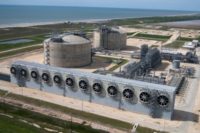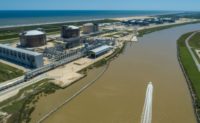Devastation to the most vulnerable upper Texas coastal areas caused by Hurricane Ike in 2008—$29 billion in damage and a lingering economic drain of $142 billion—was the wake-up call to six county judges to come up with a defensive solution.
In late June, the officials, who run the Gulf Coast Community Protection and Recovery District, will recommend long-studied options to the state that will include a floodgate-and-barrier system on Galveston Bay—dubbed the “coastal spine” or “Ike dike”—that could cost up to $11 billion and take until 2035 to complete.
“We know that building any structure is cheaper than damage from another storm,” says district President Robert Eckels.
With a $4-million state grant, the district developed a series of options that range from a $1.9-billion enhancement of the existing protection system in the Freeport-Angleton-Lake Jackson area to an 840-ft floating sector gate sunk 60 ft across the Houston Ship Channel to protect the nation’s largest refining and petrochemical complex nearby.
It would require 25 vertical-lift gates to maintain the environmental flow to the region’s bay and estuary system. Construction is estimated at $5.8 billion.
The next steps include refining the cost estimates and environmental studies, Eckels says.
Meanwhile, the U.S. Army Corps of Engineers launched its own $20-million study this year of protective options.
Texas Sen. John Cornyn (R) introduced legislation in late April to reduce the five years needed to complete that study by requiring the Corps to incorporate the district’s conclusions. The bill also would allow work to proceed to the building phase without congressional approval.
Rep. Randy Weber (R) expects strong state support for companion legislation in the House. The state is among the few in the U.S. without a hurricane protection plan, Corps Galveston district commander Col. Richard Pannell told lawmakers.
Funding planned fixes is the next challenge, Eckels says. Texas hopes that expediting project details could gain it the same level of federal funding in the wake of a major hurricane that Louisiana got after Katrina, but officials acknowledge current financial and political realities.
“This will be a heavy lift to get Congress to fund the project,” Eckels says, noting that the federal government does not value the avoided costs of storms. “We hope to get something done by the next storm,” he says.






Post a comment to this article
Report Abusive Comment